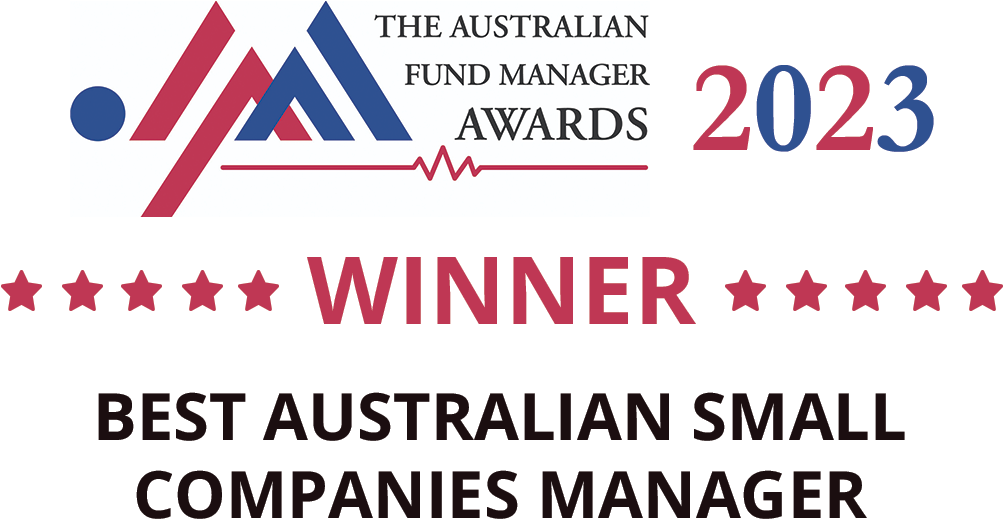- © Copyright 2025 Hyperion. All Rights Reserved.
- Privacy Policy
- Created by Codex
2025 Morningstar, Inc. All rights reserved. The information contained herein: (1) is proprietary to Morningstar and/or its affiliates or content providers; (2) may not be copied, adapted or distributed; (3) is not warranted to be accurate, complete or timely and 4) has been prepared for clients of Morningstar Australasia Pty Ltd (ABN: 95 090 665 544, AFSL: 240892), subsidiary of Morningstar. Neither Morningstar nor its content providers are responsible for any damages arising from the use and distribution of this information. Past performance is no guarantee of future results. Any general advice has been provided without reference to your financial objectives, situation or needs. For more information refer to our Financial Services Guide at www.morningstar.com.au/s/fsg.pdf. You should consider the advice in light of these matters and if applicable, the relevant Product Disclosure Statement before making any decision to invest. Morningstar’s publications, ratings and products should be viewed as an additional investment resource, not as your sole source of information. Morningstar’s full research reports are the source of any Morningstar Ratings and are available from Morningstar or your adviser. To obtain advice tailored to your situation, contact a financial adviser. Some material is copyright and published under license from ASX Operations Pty Ltd ACN 004 523 782.© 2025 Morningstar All Rights Reserved. The information contained herein: (1) is proprietary to Morningstar and/or its affiliates or content providers; (2) may not be copied, adapted or distributed; (3) is not warranted to be accurate, complete or timely; and (4) does not constitute advice of any kind, whether investment, tax, legal or otherwise and 5) has been prepared for New Zealand wholesale clients of Morningstar Research Ltd, subsidiary of Morningstar, Inc and is not intended for New Zealand retail clients. Neither Morningstar nor its content providers are responsible for any damages arising from the use and distribution of this information. Past performance is no guarantee of future results
© 2021FE Money Management. all rights reserved. the information, data, analyses, and opinions contained herein (1) include the proprietary information of FE Money Management (2) may not be copied or redistributed (3) do not constitute investment advice offered by FE Money Management (4) are provided solely for informational purposes and therefore are not an offer to buy or sell a security (5) are not warranted to be correct, complete, or accurate. FE Money Management shall not be responsible for any trading decisions, damages, or other losses resulting from, or related to, this information, data, analyses, or opinions or their use. FE Money Management does not guarantee that a fund will perform in line with its Fund Manager of the Year award as it reflects past performance only. Likewise, the Fund Manager of the Year award should not be any sort of guarantee or assessment of the creditworthiness of a fund or of its underlying securities and should not be used as the sole basis for making any investment decision. Ratings are published by Lonsec Research Pty Ltd ABN 11 151 658 561 AFSL 421 445 (Lonsec). Ratings are general advice only, and have been prepared without taking account of your objectives, financial situation or needs. Consider your personal circumstances, read the product disclosure statement and seek independent financial advice before investing. The rating is not a recommendation to purchase, sell or hold any product. Past performance information is not indicative of future performance. Ratings are subject to change without notice and Lonsec assumes no obligation to update. Lonsec uses objective criteria and receives a fee from the Fund Manager. Visit lonsec.com.au for ratings information and to access the full report. © 2022 Lonsec. All rights reserved.
Disclaimer – The information contained on this site is published in good faith but no representation or warranty, express or implied, is made by Hyperion Asset Management Limited ABN 80 080 135 897 AFSL 238 380 (‘Hyperion’) or by any person as to its accuracy or completeness and it should not be relied on as such. It is intended exclusively for Professional Clients as defined by the UK Financial Conduct Authority (‘FCA’) and should not be relied upon by other persons, such as Retail Clients, as defined under the FCA’s Rules. The definitions can be found on the FCA website at www.fca.org.uk.
Applications to invest must only be made based on the offer document relating to the specific investment (e.g. prospectus, key investor information document or other applicable terms and conditions). Before making any final investment decisions and to ensure you understand whether the strategy is suitable, please seek financial advice.
Hyperion is an affiliate of Pinnacle Investment Management Ltd. Pinnacle Investment Management (UK) Ltd (FRN 1013835), is authorised and regulated in the UK by the FCA. Please contact the Pinnacle Distribution Team via emea@pinnacleinvestment.com for any additional information.
This webpage is prepared by Hyperion Asset Management Limited ABN 80 080 135 897 AFSL 238 380 (‘Hyperion’) as the investment manager of the Funds. Hyperion believes the information contained in this website is reliable, however no warranty is given as to its accuracy and persons relying on this information do so at their own risk. Any opinions or forecasts reflect the judgment and assumptions of Hyperion and its representatives based on information at the date of publication and may later change without notice. Any projections contained in this website are estimates only and may not be realised in the future. Returns from investments may fluctuate and past performance is for illustrative purposes only and is not a reliable indicator of future performance. The information is not intended as a securities recommendation or statement of opinion intended to influence a person or persons in making a decision in relation to investment. This information is for general information only. It has been prepared without taking account of any person’s objectives, financial situation or needs. Any person relying on this information should obtain professional advice before doing so. To the extent permitted by law, Hyperion disclaims all liability to any person relying on the information in respect of any loss or damage (including consequential loss or damage) however caused, which may be suffered or arise directly or indirectly in respect of such information contained in this website. Unauthorised use, copying, distribution, replication, posting, transmitting, publication, display, or reproduction in whole or in part of the information contained in this website is prohibited without obtaining prior written permission from Hyperion. This disclaimer extends to any entity that may distribute this information. No distribution of this material will be made in any jurisdiction where such distribution is not authorised or is unlawful.
Hyperion is an affiliate of Pinnacle Investment Management Ltd. Pinnacle Investment Management (UK) Ltd (FRN 1013835), is authorised and regulated in the UK by the FCA. Please contact the Pinnacle Distribution Team via emea@pinnacleinvestment.com for any additional information.








